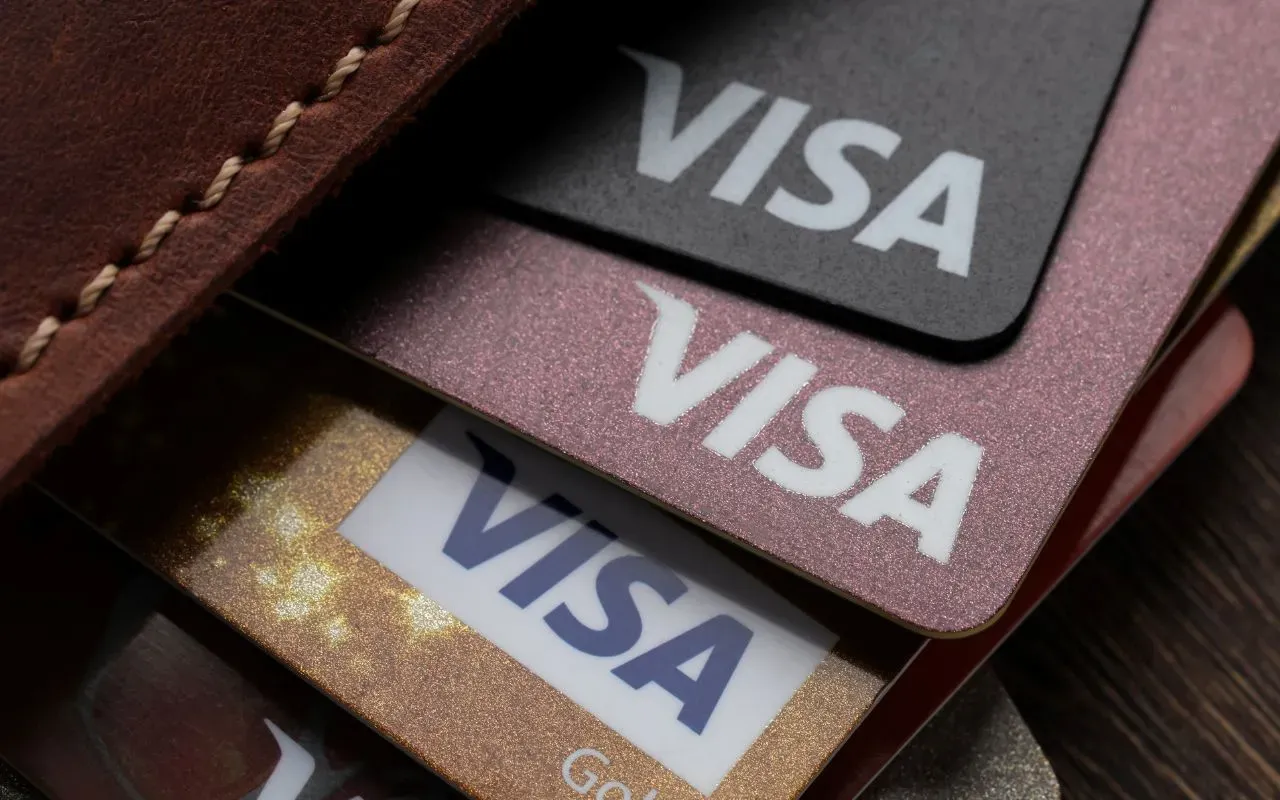Discover Great Student Bank Accounts
The opinions expressed in this article are the author's own and do not reflect the view of Pathward®.
As a student, it is essential to manage your finances and develop strong financial literacy skills. Great student bank accounts can make all the difference in helping you stay in control of your money while focusing on your studies. As a platform committed to helping students fight student debt, we’re well-versed in the financial landscape for students.
Drawing on our expertise, we bring insights into student bank accounts, providing valuable information to empower students in their financial endeavors. In this article, we will take a close look at nine student bank accounts available today while answering some frequently asked questions about awesome student bank accounts.
Here at Bold.org, we are committed to helping students reduce their student debt. Apply for scholarships today to reduce your college costs!
What Is a Student Bank Account?
If you're new to the world of banking, you may be wondering what exactly a student bank account is. Simply put, a student bank account is one designed specifically for students. These accounts come with a range of benefits tailored to meet the unique needs and financial circumstances of students.
A student bank account is similar to a regular current account but with added perks designed to suit the lifestyle and needs of students. Many banks offer students benefits such as interest-free overdrafts, low or waived monthly fees, and exclusive deals on banking products.
One of the key features of a student bank account is the interest-free overdraft facility. This can be a lifesaver for students who may need some extra financial flexibility during their studies. With an interest-free overdraft, you can borrow money from your account without incurring any interest charges up to a certain limit set by the bank. Many student bank accounts also waive overdraft fees if the overdraft charge is less than a certain amount.
Apply for the Bold Debit Card today!
In addition to the interest-free overdraft, student bank accounts often come with lower fees or waived monthly fees compared to regular accounts. This means you can save money on things like transaction fees, ATM withdrawals, monthly service fees, overdraft fees, and international transfers. These savings can add up over time and help you stretch your budget further.
Furthermore, many banks offer exclusive deals and discounts on various products and services to students with a student bank account. These can range from discounted travel cards to special rates on loans or credit cards. Taking advantage of these offers can help you save money and make your student life more affordable.
Exploring 9 Student Bank Accounts: Checking & Demand Deposit Options
To help you make an informed choice, let's take a closer look:
Great for Paying for School: The Bold Account and Bold Visa® Debit Card
The Bold Account is a demand deposit account backed by Pathward®, designed to support students by offering rewards for purchases made with the Bold Debit Card. It allows students to earn points and redeem them for student loan payments or cashback.
Earn 1 Bold Point* for every $1 spent across any category. Redeem 2,000 Bold Points for $10 cashback or for $15 towards your student loan payment. The Bold Debit Card also offers no annual or hidden fees, foreign transaction fees, account closing fees, or credit limit fees.†
The Bold Debit Card is FDIC insured via its partner bank.** The FDIC provides insurance of up to $250,000 per depositor at banks and savings institutions with FDIC insurance. This protection covers your deposits at each FDIC-insured bank and is effective for every form of account ownership.
Although FDIC insurance covers deposits in all types of accounts at FDIC-insured banks, it does not cover non-deposit investment products, even those offered by FDIC-insured banks. For more information about coverage and limitations, see the FDIC website.
Get Started with the Bold Debit Card
Earn rewards that help pay for school.* Apply for the Bold Debit Card today!
Join Bold.orgDiscover Cashback Debit Account
The Discover Cashback Debit Account is a popular choice among college students because it offers cashback for debit card purchases each month. Every time you use your debit card for everyday purchases, you can earn cashback. It's like getting paid for spending money. Whether it's buying groceries, paying for transportation, or shopping for essentials, you can earn money while you spend.
The checking account has zero monthly service fees and offers a network of tens of thousands of fee-free ATMs across the country. This is a great student checking account for college students looking to earn cashback on their debit card purchases. Discover Bank is an online-only bank, so while this institution doesn't offer brick-and-mortar locations, it has a robust system of online and mobile banking tools.
For more specific and up-to-date information about the Discover Cashback Debit Account, consult Discover’s website.
Get Matched to Thousands of Scholarships
Create your Bold.org profile to access thousands of exclusive scholarships, available only on Bold.org.
Create Free ProfileChase College Checking Account
The Chase College Checking Account offers all the tools and resources necessary for college students to manage money independently. The monthly service fee is waived for those enrolled in school upon opening the account, up to their graduation date, with a five-year maximum. For those looking to build their credit, the Chase College Checking Account is an excellent option. It offers free credit score tools and opportunities to build your credit score.
For more specific and up-to-date information about the Chase College Checking Account, consult Chase’s website.
Capital One MONEY Account
The Capital One MONEY Teen Checking Account offers a checking account and debit card for teens and kids 8+ with no monthly fees. This student checking account is great for learning to manage money, all with no monthly service fee. Students gain free access to Capital One's mobile banking apps. It offers tools for parents and joint account holders to monitor the account as well.
For more specific and up-to-date information about the Capital One MONEY Teen Checking Account, consult Capital One’s website.
PNC Virtual Wallet Student Account
If you're someone who likes to keep track of their spending and budget effectively, the PNC Virtual Wallet Student Checking and Savings Accounts might be the right fit for you. It provides a seamless integration with popular money management apps, allowing you to sync your bank account with these apps and get a clear picture of your financial health. You can set spending limits, categorize your expenses, and get personalized insights to help you make better financial decisions.
PNC cardholders gain fee-free access to a national network of ATMs, with ATM fee reimbursement on the first few bank ATM transactions per statement period. There are no monthly service fees and an automatic refund on your first overdraft fee. This account also comes with one no-fee domestic or international wire transfer per statement period.
For more specific and up-to-date information about the PNC Virtual Wallet Student Checking and Savings Accounts, consult PNC’s website.
Ally Bank Interest Checking
If you want to grow your savings and earn interest on your checking account, the Ally Spending Account offers a competitive APY. This debit account offers much higher interest rates than most major banks, without monthly maintenance fees, overdraft fees, low daily balance fees, or fees on incoming domestic and international wires.
For more specific and up-to-date information about the Ally Spending Account, consult Ally’s website.
U.S. Bank Student Checking Account
The US Bank Smartly Checking Account is a convenient student checking account with special benefits for young adults and teens. This account offers multiple ways to waive monthly maintenance fees, no ATM fees on your first few transactions per statement period, free overdraft protection, and an overdraft fee forgiveness program. You can get a customized debit card with this account.
For more specific and up-to-date information about the US Bank Smartly Checking Account, consult US Bank’s website.
Truist One Checking Account
The Truist One Checking Account offers a dedicated mobile app with features specifically designed for students. Whether it's checking your balance, making a payment, or finding the nearest ATM, the mobile app makes banking on the go more convenient than ever. This account has free overdraft protection, five ways to avoid monthly maintenance fees, and five benefit levels with automatic upgrades, so your account grows with you.
For more specific and up-to-date information about the Truist One Checking Account, consult Truist’s website.
Chime Checking Account and Debit Card
Last but not least, the Chime Checking Account and Debit Card is designed for college students looking to begin their financial journey or improve their financial responsibility skills. There are no minimum balance fees, no monthly fees, and no overdraft fees with this account. Chime is known for its excellent customer service and user-friendly interface that makes banking a breeze, even if you're new to managing your finances.
For more specific and up-to-date information about the Chime Checking Account and Debit Card, consult Chime’s website.
Sign up for the Bold Debit Card today to help you reduce your college costs!

How to Choose a Student Bank Account
When comparing student bank accounts, there are several key features that you should keep an eye out for:
Minimum Balance Requirements
Most banks require a minimum deposit to open an account. For student checking accounts, this minimum opening deposit is usually lower than with a typical bank account. It is important to choose an account with minimum balance requirements that match your typical income and spending habits.
An account's minimum balance requirement is enforced based on your average daily balance. If your account balance drops below this amount, you will usually face penalties in the form of a daily fee until your balance is restored to above the minimum requirement.
Account Fees
Pay attention to any fees associated with the account when choosing a student bank account. Some student accounts offer fee-free banking, while others may charge for services such as using your debit card abroad or withdrawing cash from ATMs. If you plan to study abroad or travel heavily, you should avoid bank accounts with high foreign transaction fees.
Most student bank accounts waive the monthly maintenance fee for up to five years while you are in school. As a student, it's important to manage your finances wisely and not let a monthly fee eat into your budget. Choosing an account that has minimal fees can help you avoid unnecessary costs.
Consider your banking habits and the potential fees you may incur, such as if you frequently travel abroad or need to withdraw cash from ATMs. Look for accounts that offer fee-free or discounted services that align with your needs.
ATM Networks and Fees
If you use a lot of cash, it can be useful to open an account with a robust network of ATMs. Many banks offer free ATM networks in major cities. If a bank does not have many brick-and-mortar locations within a particular city, it may partner with a business or another bank to offer fee-free ATMs in those locations.
ATM fees can take the form of a flat fee or a percentage of the amount you withdraw in addition to a flat fee. Some banks waive ATM fees for students or offer ATM fee reimbursement. If you intend to use a lot of cash, it is essential to research the availability of no-fee ATMs and the ATM fee policies for the banks you are considering.

Overdraft Protection and Overdraft Fees
Another important feature to consider is overdraft protection. This allows you to borrow money from your bank up to a certain limit when you overdraw your account balance without incurring high-interest overdraft fee charges. Overdraft protection can be useful for students who may experience unexpected expenses or need some extra financial support.
Many bank accounts have overdraft fees, typically ranging from $35 to $50 or more, for each day that your balance remains overdrawn. When choosing a student bank account, look for accounts that offer interest-free overdrafts or waive overdraft fees altogether. This means that you won't have to pay any interest on the borrowed money as long as you stay within the agreed limit.
Consider the overdraft limit that suits your needs, as different banks may offer varying limits. It's important to be mindful of your spending and not rely too heavily on your overdraft, as it is still a form of borrowing that needs to be repaid.
Mobile Check Deposit and Other Online Features
If you regularly receive checks through work or school, it is helpful to choose a bank with mobile check deposit features. This allows you to deposit a check through the bank's app or website without going to a brick-and-mortar location. These days, almost all checking accounts offer direct deposit to receive transfers of money from your employer or work-study job.
Another important online feature is free online bill pay. If you plan to open a student credit card or pay utility and wifi bills, it is helpful to choose an account with free online bill pay. Overall, online and mobile banking options are helpful for students on the go.
Money Transfers
Transferring money can incur a litany of fees with some bank accounts. If you intend to receive money transfers from family, it is important to choose a checking account without fees to transfer money. Another option is to choose an account that allows you to add a joint account holder. You can add one or both parents as account holders, enabling them to deposit money into your account more easily. Joint account holders can also monitor your debit card purchases.
Interest Rates
While interest rates may not be as high as other types of accounts, it's still worth considering when choosing a checking account. Look for accounts that offer competitive interest rates on your savings. Even a small difference in interest rates can make a substantial impact on your savings over time. You can also open a savings account with a higher Annual Percentage Yield (APY) in conjunction with your checking account.
Account Bonuses
Many banks offer bonuses to new account holders that fulfill certain requirements, such as receiving a certain amount of direct deposit within the first few months of opening the account. You may also receive an additional bonus if you open your student checking account in conjunction with an online savings account. Sometimes, banks even offer a bonus based on account balances in the first few months or years of opening the account. These are great incentives to earn preferred rewards while managing your money.
Some student bank accounts come with additional benefits such as discounts on shopping, travel, or entertainment. These benefits can add value to your banking experience and help you save money in other areas of your life. Consider what additional benefits are important to you and choose an account that offers them.

How to Open a Student Bank Account
Opening a student bank account is a straightforward process. However, it's important to understand the requirements and steps involved to ensure a smooth and hassle-free experience.
Required Documents
To open a student bank account, you will typically need to provide proof of identification, such as a passport or driver's license, proof of address, and confirmation of your student status. These documents are essential for the bank to verify your identity and eligibility for a student account.
When it comes to proof of address, you can usually provide a recent utility bill, a rental agreement, or a letter from your educational institution confirming your address. Make sure the document is in your name and clearly displays your current address.
Confirmation of your student status can be obtained through a letter from your school or university, an enrollment certificate, or a student ID card. This document is crucial as it demonstrates that you are currently enrolled in an educational institution and eligible for the benefits and features offered by student bank accounts.
The Application Process
Once you've gathered the necessary documents, you can apply for a student bank account online or visit a branch in person. If you choose to apply online, visit the bank's website and navigate to the student account section. Fill out the application form, providing accurate and up-to-date information. Take the time to review the form before submitting it to ensure all details are correct.
If you prefer a face-to-face interaction, you can visit a branch near you. Approach one of the bank representatives and let them know that you're interested in opening a student bank account. They will guide you through the application process, answering any questions you may have along the way.
Regardless of the application method you choose, it's essential to follow the instructions provided by the bank. Pay close attention to any additional requirements or specific procedures they may have.
This will help expedite the process and prevent any unnecessary delays. If you have any questions or concerns during the application process, don't hesitate to reach out to the bank's customer service team. They are there to assist you and ensure that your experience is as smooth as possible.
Once your application is submitted, the bank will review it and verify the information provided. This may take a few days, so be patient. If everything checks out, you will receive confirmation of your new student bank account along with any additional instructions, such as how to activate your debit card or set up online banking.
Opening Your Bold Account
Getting started with your Bold Account is a straightforward process designed to integrate seamlessly with your financial lifestyle. Here's how to set everything up:
Begin by applying for the Bold Debit Card. Once approved, your card will be mailed to you, typically arriving within 5-10 business days. Upon receiving your card, activate it by following the instructions provided, which usually involve logging into your Bold.org account and activating it through your dashboard.
Link your existing bank accounts to your Bold Account. This can be done on your dashboard, providing a convenient view of your finances. Easily transfer funds from your linked bank accounts to your Bold Account to start using it for your daily transactions to earn Bold Points!*
For added convenience, set up Early Pay‡ to have your paycheck or other recurring income deposited directly into your Bold Debit Card account, ensuring your funds are available for use.

Frequently Asked Questions About Student Bank Accounts
What are the benefits of a student bank account?
A student checking account and savings account often come with low or no fees compared to traditional bank accounts. This is a lifesaver for students with irregular incomes. A student account is a great way to begin your financial journey while gaining the financial skills to manage your money.
Many banks give balance bonuses to new student account holders. Some student bank accounts come with additional benefits such as discounts on shopping, travel, or entertainment. These benefits can add value to your banking experience and help you save money in other areas of your life.
How do I manage a student bank account?
Create a customized budget for your financial situation and stick to it. Avoid the temptation to rely too heavily on your overdraft, as it is a debt that will need to be paid back eventually. Be cautious when sharing your banking information or using public Wi-Fi to protect your account from fraud.
How do I budget for a student checking account?
You can utilize different software and apps to create a budget, or you can do it by hand. Some banking software even has budget features built in. First, analyze your current spending habits by category in comparison to your income. Then, decide which areas you want to spend less or more on. Set limits on a weekly or monthly basis, and stick to them to avoid overspending. Stay on top of your balances and transactions by using online banking or mobile apps. Keep an eye on any fees and ensure you have enough funds to cover them.
Check out our Scholarship Blog for more financial tips, and apply for scholarships today!
Bold.org Visa® Debit Card is a demand deposit account provided by Pathward®, N.A., Member FDIC. Bold.org Visa Debit Card is issued by Pathward, N.A., Member FDIC, pursuant to a license from Visa U.S.A. Inc. Card can be used everywhere Visa debit cards are accepted. Visa is a registered trademark of Visa U.S.A. Inc. All other trademarks and service marks belong to their respective owners. Register your Card for FDIC insurance eligibility and other protections.
No brands, products, or companies mentioned are affiliated with Bold.org, nor do they endorse or sponsor this article.
*This product or service is independent of Pathward® and Visa and is neither endorsed nor sponsored by Pathward® or Visa.
**Funds are FDIC insured, subject to applicable limitations and restrictions, once Pathward receives the funds deposited to your account.
†The features associated with the Bold Debit Card discussed in this blog post are provided by Bold.org and are not affiliated with our Bank partners, Pathward®, or Visa.
‡Early direct deposits will generally be posted on the day they are received, which may be up to two business days prior to the scheduled payment date. Some direct deposits may not be eligible for Early Pay. Early Pay may be delayed due to fraud prevention screening, system processing, or account restrictions. Get in touch at contact@bold.org with any Early Pay questions.

About Bold.org Editorial Team
Our dedicated Editorial Team is passionate about empowering students on their academic journey by providing valuable insights into scholarships, student loans, finances, and college life. We believe in the influential power of education and strive to make the path to success a bit smoother for every student. College is more than just classes and exams; it's a transformative experience. Our articles explore various aspects of college life, from choosing the right major to balancing academics and extracurricular activities. Our objective is to help students and graduates receive more information about scholarships, grants, and all sorts of financial aid.
Our team is made up of expert college students and graduates with personal experience funding their education, using a voice catered to students to provide informational content through accessible means. With this student-centric voice, the team is able to serve a wide range of audiences, from high school users and college students to adult learners and graduates looking to pay off student loans.
Here at Bold.org, we work with expert Content Writers and Editors to create the most compelling and informative blog articles. The content found on Bold.org is original and published after an extensive research process. With our commitment to providing accurate, timely, and relevant information, we aim to be your go-to resource for all your academic and financial needs.